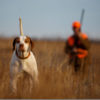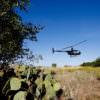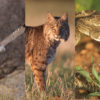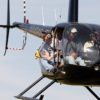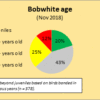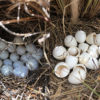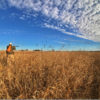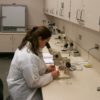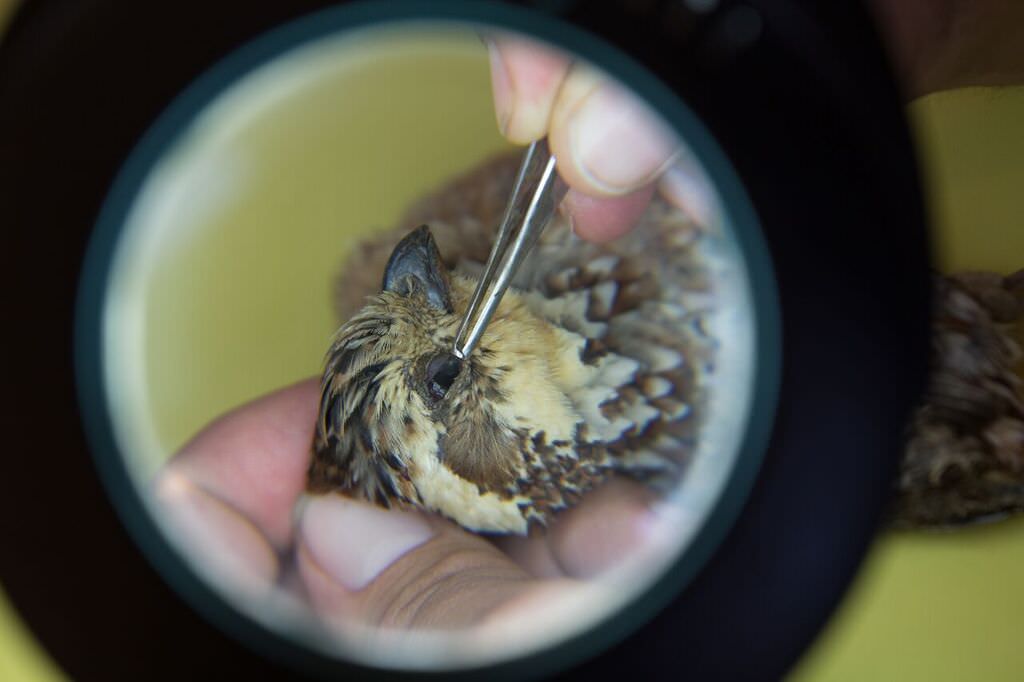
“Anyone who thinks we don’t have a problem with eyeworms should ‘open their eyes.” – Joe Crafton
“Tell me, and I forget. Show me, and I remember. Involve me, and I understand.” – Chinese proverb
This proverb serves as the motto for the Bobwhite Brigade. It’s also a proper epithet for this month’s lead story on eyeworms. Much of the information herein stems from a couple of recent hunts in Stonewall Co. by RPQRF Board member Joe Crafton; Crafton also serves as Chairman of Park Cities Quail.
“I have been talking about the eyeworm since I first heard about it 4 years ago. I have read technical papers, listened to presentations and made presentations. I have been to Dr. Ron Kendall’s laboratory and looked through microscopes at the little buggers I have even filmed video about them. However, I must admit, I have not regularly examined the birds that I harvested. But that changed this past month.
I was hunting in Stonewall County. The first bird that I inspected gave me chills. It had numerous eyeworms of enormous size. As I looked through the 30 birds that day, I found 8 with eyeworms and another 4 who were missing an entire eye. All they had was one good eye and an empty eye socket. Keep in mind, these are the ones I could see on the surface of the eye. I will never again enjoy angel hair pasta!
I have come to realize that it is important to inspect them while the body is still warm so that the parasites do not leave the body. I put them in separate zip-top bags and sent them to the lab for study. Even though I only spotted eyeworms in 8 of the 30 samples. Dr. Kendall’s lab performed necropsies and found them in 100% of the samples. One of these birds had 76 eyeworms. Another had 966 cecal worms. In the future I plan to give each eye a look before dropping them in the box.
See this video (https://youtu.be/VSfwWONuU0Y of a different quail than the one I sent last week. The first thing I notice when I am looking at a heavily infected bird is the milky, inflamed nictitating membrane around the edge of the eye. If you notice from this video, when I applied pressure on the membrane, it is full of worms. Next hunt, I am going to experiment to see if it makes a difference in checking right away or an hour after the bird dies to see if more worms emerge from the back of the eye. I suspect that is the case.
When I showed the video to hunters from Shackelford and Clay counties, they wondered if they had a problem. I think it would be extremely helpful if we had similar indisputable proof from all over West Texas and Oklahoma.
To twist an old phrase “a problem is when your friend’s ranch has parasites…an epidemic is when your ranch has parasites!”
Our recent posts regarding eyeworms have really “moved the needle” with you all. One post (by Crafton on 12/18) garnered more than 49,500 views, 200+ comments and 240 “shares” so far. We appreciate your help spreading the word about eyeworms and quail. If you encounter any quail with eyeworms (or missing an eye), we encourage you to post the information to our Facebook page (we’d love a photo or two, as well). Alternatively, feel free to email us at drollins@quailresearch.org to let us know your findings.
As a reminder, the key to checking a quail for eyeworms is to stretch the eye open and apply downward pressure with your thumbs on both edges of the eyes. Sometimes worms will immediately come out from the third eyelid (the “nictitating membrane”) and move around on the surface. We look forward to hearing what you all are seeing afield!


